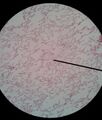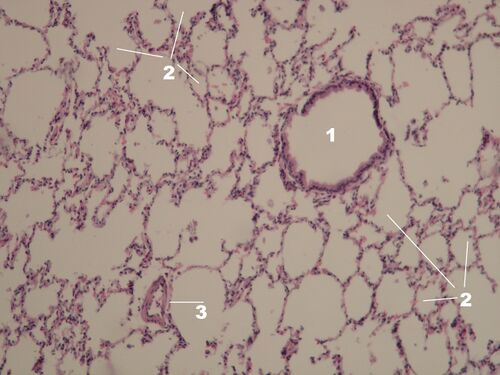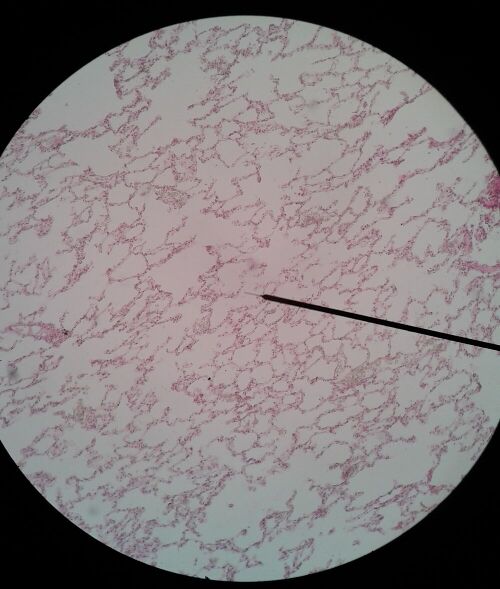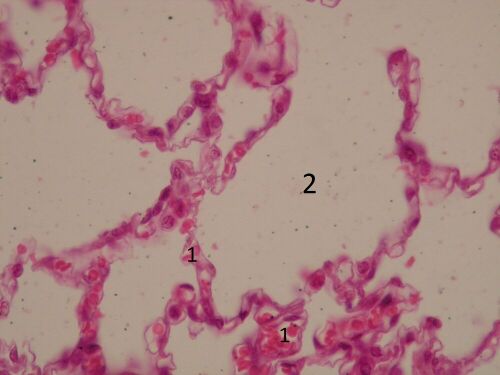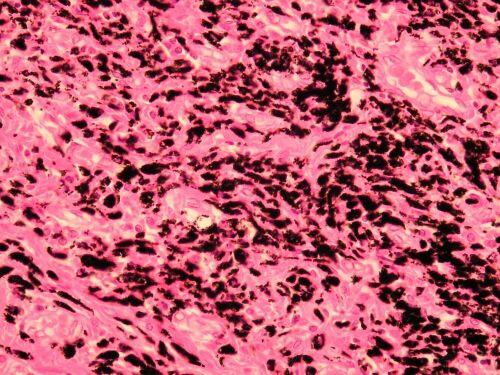Lung (preparation)
Lung B10[edit | edit source]
Overview[edit | edit source]
Preparation 1[edit | edit source]
Name: Lung – alveoli and bronchiolus (HE)
Description: The wall of bronchiolus (diameter is less than 5 mm) is lined with multi-rowed to single-layered cylindrical epithelium with cilia, or in the smallest bronchioles only with cubical epithelium with cilia. Terminal brochioles additionally contain Clar's cells. The lamina propria is very thin, the wall is further made up of smooth muscle and elastic and collagen fibers. Cartilage, seromucinous glands, and lymphatic tissue are no longer present in the bronchioles.
1 - bronchiolus 2 - lung alveoli
Preparation 2[edit | edit source]
Name: Lung – lung alveoli (HE)
Description: The barrier between air and blood is formed by a single-layered flat epithelium (type I pneumocyte), the basement membrane (fused laminae basales of both epithelia) and the endothelium of the somatic capillary (with a continuous endothelium). The inner surface of the alveolus is covered by surfactant, which is produced in type II pneumocytes.
Preparation 3[edit | edit source]
Name: Lung alveoli (HE)
Description: The interalveolar septum is formed by two layers of flat epithelium, between which lies a dense network of capillaries, fibrous cells, elastic and reticular fibers and extracellular matrix.
1 - interalveolar septa with numerous capillaries 2 - lumen of the alveolus
Preparation 4[edit | edit source]
Name: Lungs - macrophages (HE)
Description: Macrophages accumulate dust particles in the lung tissue that they cannot break down. That's why they have a dark color. From the lumen of the alveoli they travel to lymph nodes, where they remain for a long time, coloring them with stored material.


